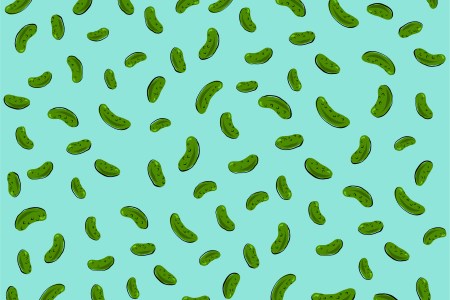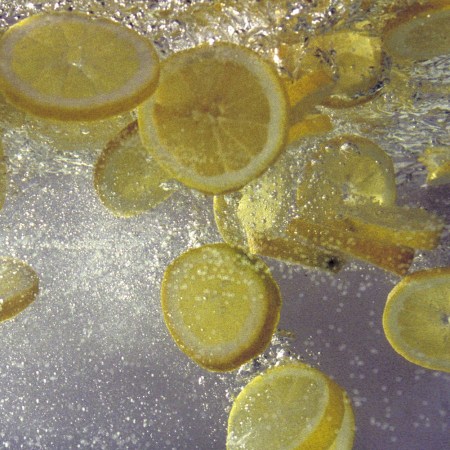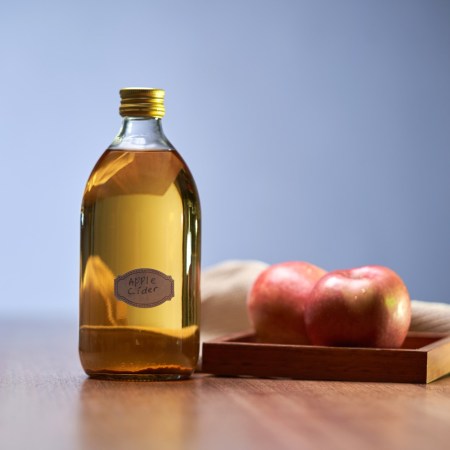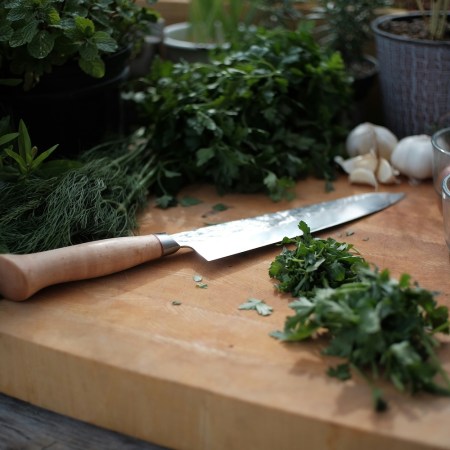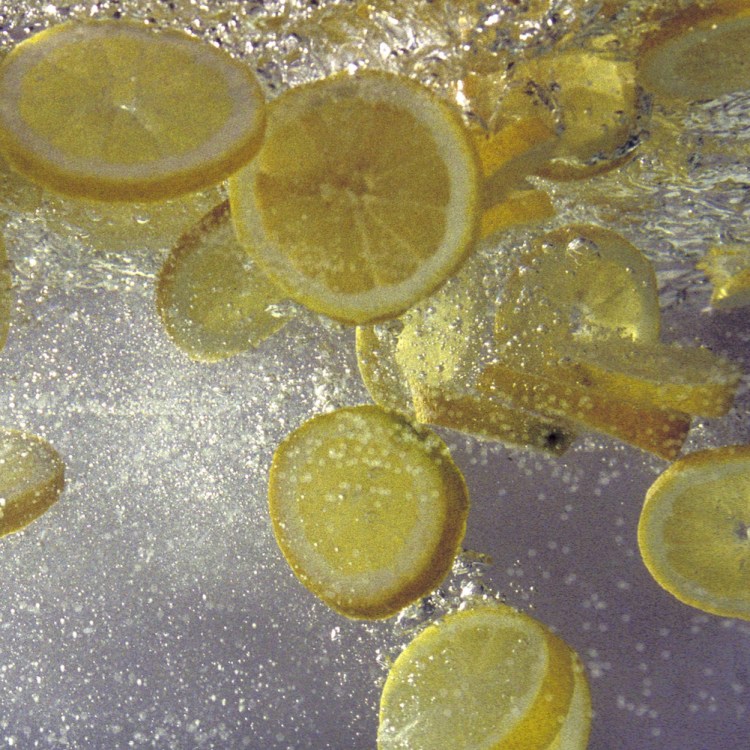One day in May 2016 I popped out of bed with a realization: More than a month into peak allergy season in the Mid-Atlantic, I had yet to suffer even one day of the familiar sneezy, headachy fatigue that had dogged me every spring and fall for the prior 30 years. Not only were those symptoms 100% gone, but I was also thinking clearer, feeling more optimistic and bounding through my late 40s with more energy than I’d had in 15 years. And the kicker: I’d dropped six pounds, attaining a body weight that I hadn’t seen since 1994.
I’ll tell you how I achieved all this in a minute — but first, let me say what motivated the shift: fear. Not fear of death (why bother?) or fear of being fat (I’d been fit my entire adult life) but fear of the suite of diseases and conditions that might sideline me from my beloved active lifestyle: dementia, cancers, arthritis, Parkinson’s disease, and other slides into immobility and dependency.
What do they all have in common? They’re all caused in part by chronic inflammation of our cells. Yeah, I know, there are many other factors, including genetics and environmental exposures. But inflammation is one we can actually control. So when I was offered the chance to try a nutrition program that would drastically reduce inflammation in my body, I jumped.
The Anti-Inflammation Primer: 7 Ways to Fight Back This Year
Chronic inflammation intersects with just about every disease you’ve ever heard of. Let’s get it under control.Green, Yellow and Red Lists
The program, offered by LifeSpan Medicine, based in Santa Monica, involved a blood test (I had a lab send mine from my hometown of Washington, D.C.) and an extensive phone interview about my diet and lifestyle. LifeSpan then sent me a report that featured three extensive lists of foods and ingredients that are good, neutral or bad for me — “green, yellow, and red” — which would rule my food and drink intake for the foreseeable future.
It was immediately clear that this wasn’t a generic anti-inflammatory diet. Along with the usual suspects of wheat, dairy and refined sugar — all of which have been associated with inflammation in large numbers of people — I was ordered to stop eating apples, oranges, olives, chickpeas, avocado, sunflower seeds, eggplant and many other foods I’d been taught were healthy. My lists also had some oddities, most notably allowing certain pork (on my yellow list) but prohibiting bacon.
LifeSpan’s lists are based on the science of lectins, proteins that are resistant to digestion because they can’t break down, explains Nicole Visnic, director of nutrition at LifeSpan. “In your gut, surface receptors that contain antigens line the stomach, and if lectins bind to certain antigens, that’s no good for you,” she says. LifeSpan’s blood test looks at more than half a dozen receptors to determine which lectins might bind to them, and then uses a computer algorithm to generate each person’s green, yellow and red lists.
Visnic says lectins can be protective in some cases; but if they bind to the wrong antigen, our immune systems perceive them as foreign bodies, which triggers an inflammatory immune response.
“In some people, this can cause a wide range of gastrointestinal symptoms,” such as irritable bowel syndrome, she tells me. “But lectins are also sneaky and can pass through the stomach lining and get into the bloodstream, where they can cause chronic, low-level inflammation,” the precise thing that drove me to try the program. Eliminate the offending foods and the inflammation stops, or so the rationale goes. The LifeSpan lists are also crafted to reduce histamine load, which is why my seasonal allergy symptoms vanished.
The company also looks at clients’ blood type and what Visnic calls “secreter status.”
“If you have a variation of the FUT2 gene, you can’t secrete your blood type into your bodily fluids, which makes you more susceptible to certain types of infections,” she says. That’s because your system is operating with low levels of Bifidobacterium bacteria, warriors against infections and some cancers. And certain blood types can be correlated with specific diseases and conditions — for example, Type O blood with ulcers and hypothyroidism, and Type A with gastric cancers; Visnic says these correlations are tied to lectins.
Turns out I’m a non-secreter, along with around 20% of the population, which is good and bad: I’m more likely to encounter GI and allergy symptoms from a standard diet, but I’m also more likely to experience dramatic improvement under a targeted diet, like the LifeSpan nutrition program.
Others Who Have Tried It
I’m not alone. Abbey Smith, a professional climber and athlete alliance manager with the advocacy group Protect Our Winters, signed on with the LifeSpan program around the same time I did.
“I was having terrible GI symptoms, cramping so bad I’d have to lie down on the ground to wait for it to pass,” Smith, now 41 and living in Los Angeles, recalls. “I also had debilitating tendonitis and all kinds of aches and pains. My hands would seize up so badly in the middle of climbing. It was affecting everything I did.”
Upon starting the program, she stuck to her “green list” for four weeks, not even allowing herself yellow list foods.
“All of my symptoms disappeared,” she says. “The inflammation in my hands went down so fast that my rings fell off. I was blown away.”
David Hodge, a music producer and photographer in New York, started the program in 2021 because his urban lifestyle was wearing him down.
“I do a lot of touring, I was drinking a lot of wine, going out to great restaurants — what people do in the city,” Hodge says. “I felt like my body needed a break.” He stuck to his green list for a month and felt a “huge transformation.”
Hodge says his finger joints felt better — critical for his career — and that his brain felt clearer.
“That was the biggest change I felt, hands down,” he says. “I had baseline anxiety my whole life and thought that was just normal for me. One day I woke up and it was just gone. I was like, ‘Wow, I feel great.’” A subsequent microbiome test (included in the $45,000 per year LifeSpan “concierge service” that Hodge pays for) showed dramatic improvements in his overall gut flora balance. “I believe that stuff is totally connected.”
Why Pickle Juice Is the Most Underrated Post-Workout Fuel
The briny buggers are chock-full of sodium, potassium and magnesiumIs This…Legit?
The science, while still evolving, seems to support Hodge’s opinion. A number of studies have established that the vagus nerve acts as a two-way communication channel between the brain and the gut, and some research has concluded that the gut microbiome is actively involved in processes linked to brain development, physiology, psychology and behavior.
A study published in 2015 in the peer-reviewed journal Brain, Behavior, and Immunity found that people who took a specific probiotic mix had lower levels of “sad mood” and anger episodes, compared with those who took a placebo.
“The microbiome is the number-one source of persistent inflammation,” Visnic says, adding that she believes a large percentage of mood disorders, dementias and certain other mental conditions are caused by something going on in their gut. “If you’re missing keystone bacteria or have too many troublemaking bacteria, you can’t fight the insults to your system,” which of course includes your brain.
Whole Foods Work Wonders
Robin Foroutan, a dietician and nutritionist at the Integrative and Functional Nutrition Academy, says she has patients who have improved dramatically after reducing or removing lectins from their diet. But she adds that, for most people, “a basic anti-inflammatory diet does not necessarily have to be low in lectins.”
“In going on a low-lectin diet, people are also eliminating so many other inflammatory foods, including ultra-processed foods, wheat, [a lot of] dairy and added sugar,” she says. “So they’re also eating an almost entirely whole-foods based diet, and that alone can ease symptoms of inflammation. It can be hard to know if eating an overall more healthy diet changed things or if it was actually removing lectins that made things better.”
Foroutan notes that the lining of the small intestine, which is only one cell layer thick, can become permeable for any number of reasons, including prescription drugs, poor sleep or high stress.
She adds that it’s important to identify the root causes of what’s making your digestive tract (and system overall) much more sensitive to compounds like lectins. For the average person, she has advice that should sound very familiar: a diet heavy on whole, minimally processed foods, including high-antioxidant vegetables, fruits, nuts, seeds, legumes and grains. She recommends cutting way back on added sugar and eating a lot of cruciferous vegetables, dark leafy greens, herbs and spices, onions, garlic, leeks and other foods that help promote detoxification.
Do You Need a “Green List”?
I can’t say if I would have had the same results following Foroutan’s advice as I did with the LifeSpan program, namely because I never summoned the necessary dietary discipline to stick to a plan until I agreed to try LifeSpan. Yes, it’s a bit pricey — $2,500 for three months (though I tested the program on a complimentary trial) — but that fee includes personal consultations, help with crafting shopping lists and menus, and other hand-holding that some people need. For many people, the mere fact of paying for such a service makes compliance far more likely.
I’ll also admit that after a few months of strict adherence in 2016, I slowly backslid into some of my old habits. But for the past two months, I’ve been sticking almost entirely to my green and yellow lists. (You get to hang onto those lists forever, after all.)
And, as in 2016, the results have been remarkable: more consistent energy, higher optimism, excellent sleep and the quick loss of five pounds. I make a few exceptions, such as allowing myself a cup of red-listed coffee every morning and the occasional gin and tonic (juniper can cause inflammation? Who knew?).
Visnic says I’m probably not killing myself with these breaches. “All red list foods aren’t created equally,” she says, and LifeSpan tells clients who are pining for certain prohibited foods to add them back, slowly and in isolation, over three days to see if they notice a difference. All of which I’ll take as validation of one of my favorite health quotes: “If you feel okay, you probably are.”
In the end, we all want to feel our best as often as possible. And with the current state of nutrition and medical science, most of us can achieve that ideal if we’re willing to give up some habitual indulgences, along with a few longstanding staples of the American diet.
As Hodge says, “I don’t think people understand what a huge impact your food intake can have. You have to look at it as a positive transformation, not a limitation.”
The Charge will help you move better, think clearer and stay in the game longer. Subscribe to our wellness newsletter today.


